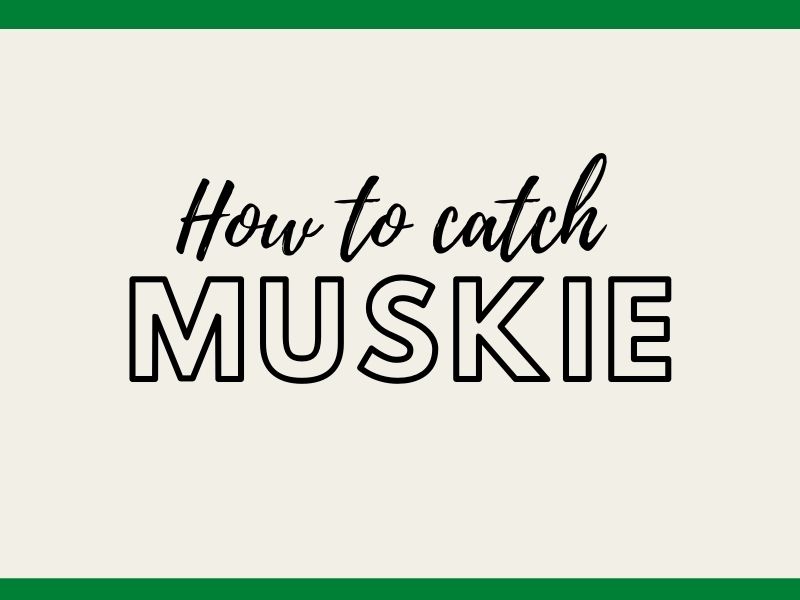Muskie are a popular game fish found throughout parts of North America and Canada. They are commonly found in many lakes and rivers throughout the Great Lakes region spanning parts of Minnesota, Michigan, Wisconsin, and Canada. Though they also reside in areas of the south and have been stocked in reservoirs in certain areas.
Catching muskie is no easy task. They are known to be very difficult to catch, which is why many anglers refer to them as the fish of 10,000 casts. This is also one of the reasons they are so prized. Every serious angler loves a good challenge.
Even though successfully catching a giant musky can be a challenge, it is very possible. If catching muskie was easy, it probably would not be quite as rewarding. With a little basic knowledge of the species and how to catch them, you can greatly increase your odds.
This is why we wrote this guide on muskie fishing. To provide you with a little knowledge and a few tips that will help you become an expert muskie angler. In this guide, we will cover the different types of muskie species, their feeding habits, habitat, seasonal patterns, weather patterns, the equipment you will need, the best kinds of lures to use, and a few additional tips and techniques to help you make a successful catch.
Different Types of Muskie Species
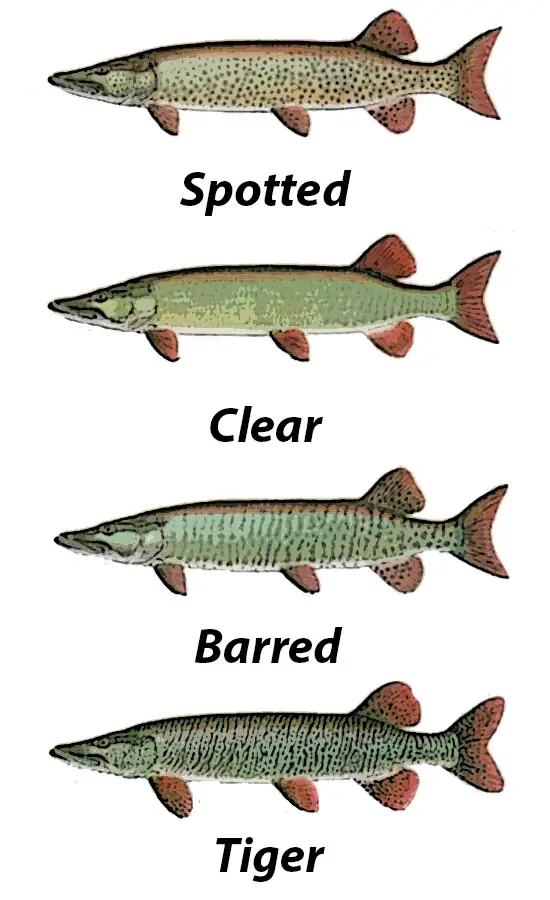
Muskie or muskellunge are a freshwater fish that are similar to northern pike in terms of behavior and appearance. There are a few known subspecies of muskie:
Spotted Muskie
Also known as the Great Lakes muskie, spotted muskie are most common in the Great Lakes region and throughout its tributary rivers. They have also been introduced into other bodies of water through certain areas of the U.S. These muskie have black or dark green dots with the fish most commonly being a light green or silver color.
Clear Muskie
These muskie are most commonly found in the lakes and rivers of Minnesota, Wisconsin, as well as areas in Canada like Ontario and Manitoba. These are some of the rarest of all muskellunge because they mostly exist in their natural habitat. They not been stocked in other waters as often as other kinds of muskie. You will recognize a clear muskie by its lack of spots or very faint spots on a silver or deep green colored fish.
Barred Muskie
Another common type of muskie is the barred muskie. These are naturally found throughout the Ohio river region and have also been stocked throughout many other bodies of water. In appearance they look somewhat similar to spotted muskies. They have large blotches of dark-colored spots on a lighter colored fish.
Tiger Muskie
A tiger muskie is a hybrid of northern pike and muskie. They are known to grow very fast but do not grow to the size of other types of muskie. These are commonly used to stock lakes and rivers because they are a sterile species, so it’s easy to control the population.
In appearance, tiger muskie looks similar to barred muskie except they feature lighter spot bands on a darker colored fish. Tiger muskie have spots that extend throughout their back, which is a clear indicator of the species. Barred muskie do not have spots on their back.
How Big Do Muskies Get?
Muskie can vary greatly in terms of size and weight depending on the body of water they are living in. Most commonly they range from 28 inches to 48 inches in length and weigh about 15 to 36 lbs. But they have also been known to reach size up to 6 feet and weigh over 70lbs. One of the largest muskie ever caught measured a whopping 61 ½ inches.
Where to Find Muskie
Muskie are not a very common fish. They are known to only exist in roughly 50% of states and do not usually travel outside of their home body o
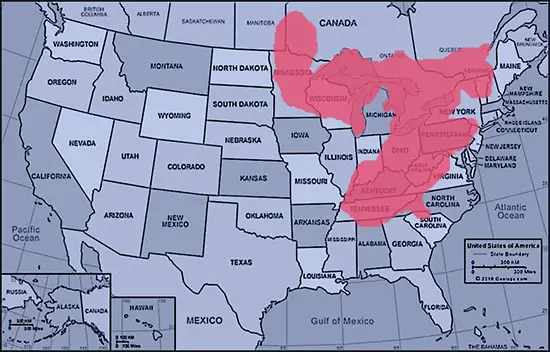
f water. Muskie thrive best in cooler waters where temperatures may range from 33 to 78 degrees Fahrenheit.
They are found in lakes and rivers in northern Minnesota, Wisconsin, Michigan, parts of Canada, and have been stocked in places like South Carolina, Georgia, Maine, Utah. One of the best ways to locate muskie filled waters is to check your state’s DNR stocking and fish report. This should show you what lakes were stocked and when they were stocked. You can also read local fishing reports that might help to point you in the right direction.
Where to Catch Muskie
The first step is to locate the lake or river that has the muskie. After you’ve done that, you can start to learn the best spots to look for your trophy fish.
At about 55 degrees is the perfect spawning temperature for muskies. Muskie usually spawns in April. The ideal place for this is flat, shallow, marshy areas. Look for isolated bays, islands, and other places where the fish can find cover from wind. Tree branches, wooded areas, bulrush, and chara is also usually a good area for spawning. If it’s not spawning season, the best place to find muskie is by locating the fish they feed upon.
What Do Muskie Eat
If muskie aren’t spawning, they are probably feeding. The general rule of fishing is that if you find the forage, you find the fish. Muskies are known to commonly eat carp, cisco, shad, suckers, and other kinds of fatty fish. Though they have also been known to eat insects, crayfish and other small mammals, other fish make up most of their diet.
When you find the lake you want to fish in, check what kind of baitfish make up the forage of the lake. If the lake is full of perch, suckers, and bluegills, these baitfish usually hangout near structure, so that is a good place to start your search. A good fish finder can also help you find schools of baitfish. This is also a good way to locate where muskie may be feeding.
Muskie Seasonal Patterns
Muskie can be caught at any time of year. Learning their seasonal patterns can go a long way towards increasing your success rate when muskie fishing.
Spring
Early spring can sometimes be a difficult time to catch muskie because the fish are not feeding in the early part of the season. After winter ends, the muskie become a little slow and sluggish, so they will not spend much energy chasing after prey. This is why it may be best to present a smaller lure with a slower retrieve. If you try to retrieve too fast the muskie may not go after your presentation.
When the water warms up to around 60 degrees in mid to late spring, then you can start to use your normal larger muskie lures. For spring fishing it may be best to go late mornings or early afternoons when the sun has had a chance to warm up the water.
Summer
After spring ends and the water warms up, muskie will begin to be much more active. The ideal temperature is about 65 degrees. During this time you may be able to find them hunting baitfish near weed beds and in shallower waters. When muskie begin to be more active larger lures and fast action lures like bucktails, spinnerbaits, and jerk baits can be a pretty good option.
When the temperature gets too hot, like into the 70’s muskie will slow down a bit. During this time you will find them in deeper waters, where a deep plug may be a good option.
Some anglers have a lot of success at fishing for muskies at night during the summer. Try using a good topwater lure or spinnerbait during late evenings and nights. It can be very thrilling to see a giant muskie attacking your surface lure during this time.
Fall
Fall is known as the best time to catch a giant trophy muskie. There is much agreement that September and October are the peak months if you’re after a giant fish. The muskie usually start to put on weight for the winter when the water hits the mid 60’s, which can present a great opportunity for fishing.
Early fall mornings, evenings, and nights are known as the best times to fish. Large lures are known to work great during this time. In late fall, as the water begins to cool, you might want to fish in afternoons and early evenings when the sun is out. As weeds start to turn brown the forage and muskie move into the shallows and shorelines, where a smaller lure and slower retrieve are the best options. In cooler waters, a muskies metabolism will begin to slow down, and they will not chase a lure.
Equipment
Now that you’ve learned a little bit about muskie, what the feed on, and their seasonal patterns, it’s time to cover the gear you’ll actually need to snag one. Here we will cover rods, reels, baits, line and other tools that you may need on your quest to catch muskie.
Muskie Rods and Reels
We always recommend beginners use spinning rods and reels because these are the easiest to operate. If you’re new to fishing and you’re unsure of what to get, use a spinning rod and reel for your muskie fishing. Using a baitcaster takes a little bit of experience and practice to master.
If you’re already an experienced angler and you’ve already got good fishing technique, then we recommend both kinds or rods and reels depending on the fishing conditions. Spinning reels are better for tossing lighter lures and baits. This would be great for conditions where the muskie are slow and sluggish in colder waters.
When the muskie are more active and likely to chase heavier and larger lures, using a baitcasting rod and reel can be a great choice. Baitcasters are generally are more powerful and have better precision and accuracy then spinning reels. If you’re after a trophy fish, they might be the best choice.
Muskie Lures
There is an endless amount of muskie baits that may be effective depending on the given day and fishing conditions. We are going to cover some of the best kinds of lures that are essential in every muskie anglers tackle box, when to use each kind of lure, and how to use them effectively.
Soft Plastic Baits
Soft plastic worms and baits are one of the most versatile musky lures you can use. These things can work great pretty much any time of year when used correctly. They work particularly well in seasons where muskie are sluggish and less likely to go after larger lures.
For the best results with plastic baits, we recommend retrieving with a slow pulling action to get the bait to rise up and down slowly. This will help the bait imitate a dying baitfish and a lethargic muskie will be more likely to bite.
Topwater Lures
Another great option for muskie fishing are topwater lures. Fishing with a topwater lure is much more exciting than your average fishing. There is nothing more thrilling than seeing a giant trophy muskie violently thrashing your surface lure.
The most common kind of topwater lure is a walk-the-dog action bait. These lures when retrieved properly move side-to-side in a zig-zag manner that attracts fish. Another great option is a topwater popper lure. These are designed to chug and pop water which imitates a wounded baitfish and gets the muskie to strike.
Properly retrieving a topwater lure to get the right action can take a little bit of experience to get down, but when done properly it can be very effective. If you’re going after muskie with a topwater lure, summer nights to early fall can be a great opportunity to find muskie in the shallows. Try fishing your topwater lure tight near cover like fallen trees or weed clumps. This can be a great way to lure a giant muskie to attack your bait.
Bucktail Jigs
These are some of the most popular lures for muskie fishing. Bucktail jigs have realistic hair and movement that is known for attracting trophy muskie. They are pretty easy to use, but there are a few tips and techniques you may want to learn that can increase your success with them.
One great way to use a bucktail lure is to jig it along the bottom. Try letting your lure hit the bottom of the lake and then reel it in. You can also use the bucktail lure like a jerkbait or fish it vertically for a great action that will attract muskie bites.
Ultimately what presentation works will depend on how aggressive the muskie are on that day. When they are more aggressive a fast retrieve will work wonders. But if they are a little more lethargic, a slower presentation is a smart bet.
Spinnerbaits
When muskie are becoming more active as waters warm up, presenting an attractive spinnerbait can be a great way to attract a hard-charging muskie. The flash and vibration of a spinnerbait can be too good to resist for a frenzied muskie.
You can have a lot of success with spinnerbaits in summer and early fall. In rivers toss your lure near rocky cover where muskies might hangout. In lakes look for coontail, milfoil and other healthy green weeds where hungry muskie come to look for food.
Jerkbaits
Another great lure for muskie fishing is the jerkbait. These are fished by twitching the rod which causes the bait to dart around with a stop-and-start action that fish find appealing. These work best in conditions where the muskie are a little bit sluggish. When muskie aren’t as aggressive a slower stop-and-start lure like a jerkbait might just do the trick.
Crankbaits
Sometimes muskie will not chase a lure no matter what you do. You can dance your favorite vibrant colored lure in front of them all you want, but they will stay hunkered down on the bottom of the lake or next to cover without budging an inch. This is where crankbait comes in. If the muskie aren’t chasing lures, bring the lure to them.
Try using a floating diver crankbait. The diving bill will create a wobble action and make contact with the cover or bottom which may cause any lurking muskie to attack the lure.
Fishing Line
There’s nothing more frustrating than watching a giant fish swim away due to line failure. You can have all the best equipment, but without a good fishing line, it would all be useless. Fishing line has come a long way from the line used in the past. Nowadays you should be able to easily find an abrasion-resistant line that absorbs shock and allows you to set quickly set your hook.
For muskie fishing, we recommend braided line. Braided line doesn’t stretch like monofilament line which is important when fighting a powerful fish like a trophy sized muskie. Braided line is a little prone to nicks though, especially since musky are a toothy predator. This is why you probably want a heavier line.
We recommend using a braided line with at least an 80lb test. Though, many anglers use upwards of 100-pound test line for muskie fishing. You may also consider using a heavy fluorocarbon leader, which is not a bad choice either.
Hooks
Often times the manufacturer hooks on your lure are a little lacking if you’re after larger muskies. If your lure is muskie specific it might have hooks designed for smaller muskie if that is the common size in the area.
Your best bet would be to carry a few different sized hooks in your tackle box and experiment with what works best. You will probably want a few different thicknesses too. If you find you are losing the fish on the bait after a few tries switch to a different sized hook.
In addition the size and thickness of your hook, you also need to pay attention to the hook gap. This is the distance between the shank of the hook and barb. The general rule is that a larger hook gap is better for larger muskies. This is because muskie have large jaws and having a bigger gap can result in a better hookset.
If the muskie in the waters you are fishing are smaller in size, having too large of a gap in your hook is actually a bad thing. Opt for a hook with a narrow gap in this situation.
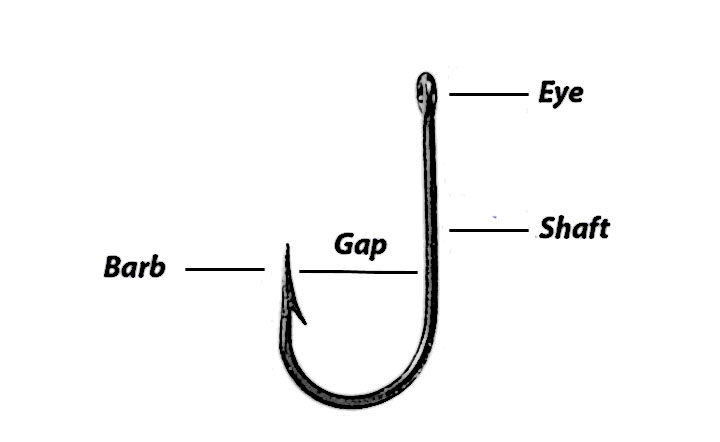
Other Tools and Equipment
There are several other tools that are useful to have when handling muskies and removing hooks. For example, you may want to bring:
- 10” or longer needle-nose pliers
- Fish handling gloves
- Jaw spreaders
- Knotless landing net
- Measuring tape
3 Tips to Improve your Muskie Catching Game
- Master The Hook Set
- See the Muskie Follows
- Master Your Lures
1. Master the Hook Set
Muskie are powerful toothy predators with strong jaws. If you don’t set the hook properly and bury it, the muskie will get free. Learning to properly set a hook takes a lot of time and practice. You will need to have great timing to quickly hook a hard-charging muskie. Take some time to understand the proper way to set a hook. Remember to practice.
2. See The Muskie Follows
If you’re not paying attention to your lure, you might miss a great opportunity when a muskie begins to follow your lure. You need to always be on the lookout for muskie follows. When you see a muskie interested in your bait, you will have to learn to properly work the fish.
The most common technique for attracting a curious muskie that is following your lure is to make wide sweeping motions in a “Figure 8” shape. You have to make sure your are using wide turns because a large muskie will have trouble following short turns.
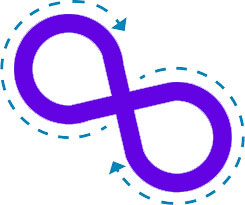
3. Master Your Lures
If you’re always experimenting with new lures without taking the time to master them, it can really hinder your success when it comes to catching fish. Not all lures work the same, and learning to properly fish and retrieve them can really improve your ability as an angler. Concentrate and mastering one lure at a time. As you get more experience you will find you pick up new lures a lot easier.
Muskie FAQ – Commonly Asked Questions
This section is dedicated to answering common questions that anglers may have about muskies.
What Does a Muskie Look Like?
Muskie vary greatly in color and pattern. They might have thick bars, light spots, or no pattern at all depending on the muskie. They also have elongated bodies with flat heads. Generally, their underbelly is also a white color. Muskie also have 6-9 pores on each side of their jaw.
How Long Do Muskie Live?
Muskie can live up to 30 years.
Can You Eat Muskie?
Since muskie are so rare, they are for catch and release fishing only. Eating muskie does happen, but they are not known for being very tasty. We would not recommend eating muskie.
When Do Muskie Spawn?
Muskie usually spawn right around April when the water temperature is between 49 and 59 degrees Fahrenheit.
Are Muskie Active At Night?
Yes, muskies are known to go hunting at night. This can be a good time to fish.
What is the Best Month for Muskie Fishing?
Fall is known as the best time for catching a trophy-sized muskie. September and October are the best months.
What is the Best Bait for Muskie?
There is no single best bait for muskie. It depends on the location and how active the fish are. Experiment with a few popular muskie lures and see what works best in your muskie waters.
Can Muskie Live in Ponds?
Muskie are apex predators, and ponds do not provide the right kind of food for muskie to thrive. It is not very likely the muskie could survive in a small pond for very many generations.
Related Posts:
Walleye Fishing Tips
Rainbow Trout Fishing Tips
Bass Fishing Tips
Rockfish Fishing Tips
